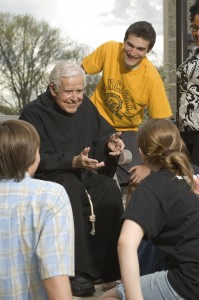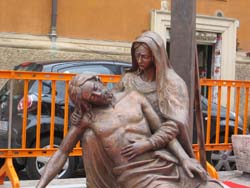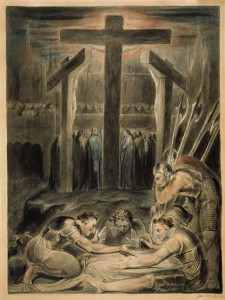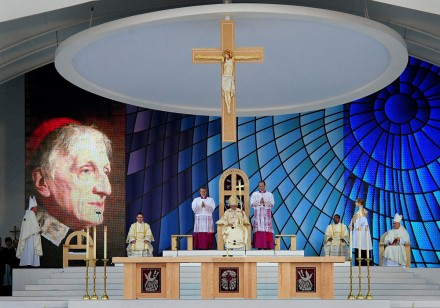 On May 15, 2011, the Church throughout the world will celebrate the 48th World Day of Prayer for Vocations.
On May 15, 2011, the Church throughout the world will celebrate the 48th World Day of Prayer for Vocations.
This year’s theme is “proposing vocations in the local Church,” which brings home the importance of promoting vocations in our own families, parishes, and dioceses. The Church desires that young people feel “welcome” in the Church and learn to take responsibility for responding to God’s call in their lives.
In anticipation of the World Day, last November Pope Benedict published a message for the event, in which he wrote,
“Particularly in these times, when the voice of the Lord seems to be drowned out by ‘other voices’ and his invitation to follow him by the gift of one’s own life may seem too difficult, every Christian community, every member of the Church, needs consciously to feel responsibility for promoting vocations. It is important to encourage and support those who show clear signs of a call to priestly life and religious consecration, and to enable hem to feel the warmth of the whole community as they respond ‘yes’ to God and the Church. I encourage them, in the same words which I addressed to those who have already chosen to enter the seminary: ‘You have done a good thing. Because people will always have need of God, even in an age marked by technical mastery of the world and globalization: they will always need the God who has revealed himself in Jesus Christ, the God who gathers us together in the universal Church in order to learn with him and through him life’s true meaning and in order to uphold and apply the standards of true humanity.'”
For the entire text of the Holy Father’s message, click here.
 In reading the
In reading the  This week the United States Conference of Catholic Bishops made public its annual survey of newly ordained priests, conducted by the Center for Applied Research in the Apostolate (CARA), a Georgetown University-based research center. The Class of 2011: Survey of Ordinands to the Priesthood surveys the men being ordained priests for U.S. dioceses and religious communities this year.
This week the United States Conference of Catholic Bishops made public its annual survey of newly ordained priests, conducted by the Center for Applied Research in the Apostolate (CARA), a Georgetown University-based research center. The Class of 2011: Survey of Ordinands to the Priesthood surveys the men being ordained priests for U.S. dioceses and religious communities this year. Every year at Easter Wednesday Mass we hear St. Luke’s account of Our Lord’s appearance to the two disciples on the road to Emmaus.
Every year at Easter Wednesday Mass we hear St. Luke’s account of Our Lord’s appearance to the two disciples on the road to Emmaus. The
The  I just came across a story on Catholic News Service on Domus Dei, a company owned by the
I just came across a story on Catholic News Service on Domus Dei, a company owned by the  Here is a translation of the sermon delivered by Father Raniero Cantalamessa, O.F.M. Cap., preacher of the Pontifical Household, at the Good Friday liturgy in St. Peter’s Basilica in 2008.
Here is a translation of the sermon delivered by Father Raniero Cantalamessa, O.F.M. Cap., preacher of the Pontifical Household, at the Good Friday liturgy in St. Peter’s Basilica in 2008. Today, as we celebrate Christ’s institution of the New Covenant priesthood at the Last Supper, I thought I would share with our readers
Today, as we celebrate Christ’s institution of the New Covenant priesthood at the Last Supper, I thought I would share with our readers 